#George wythe randolph
Photo
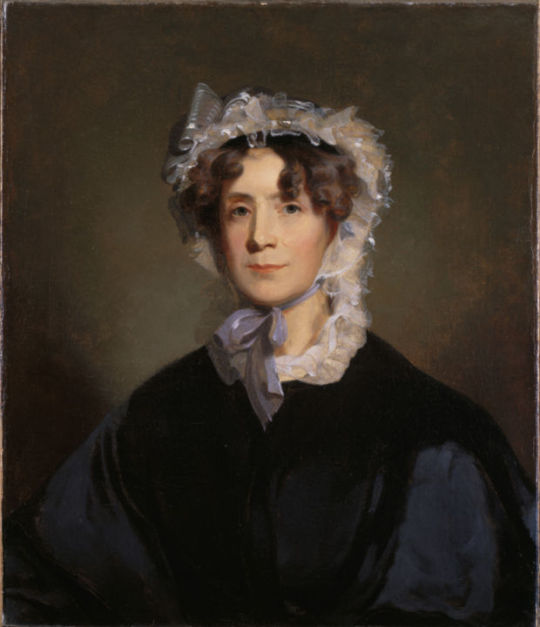
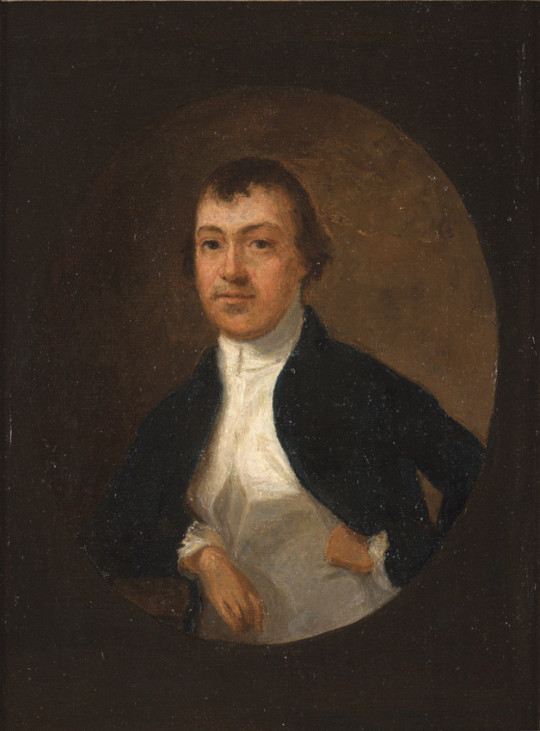
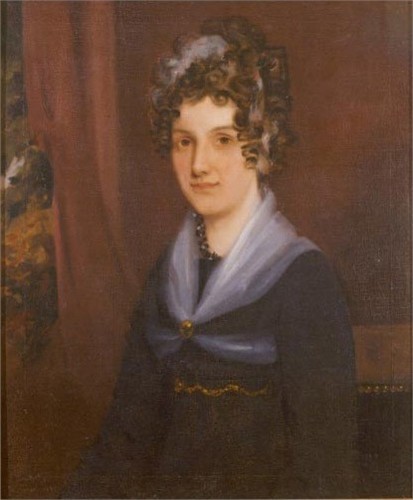

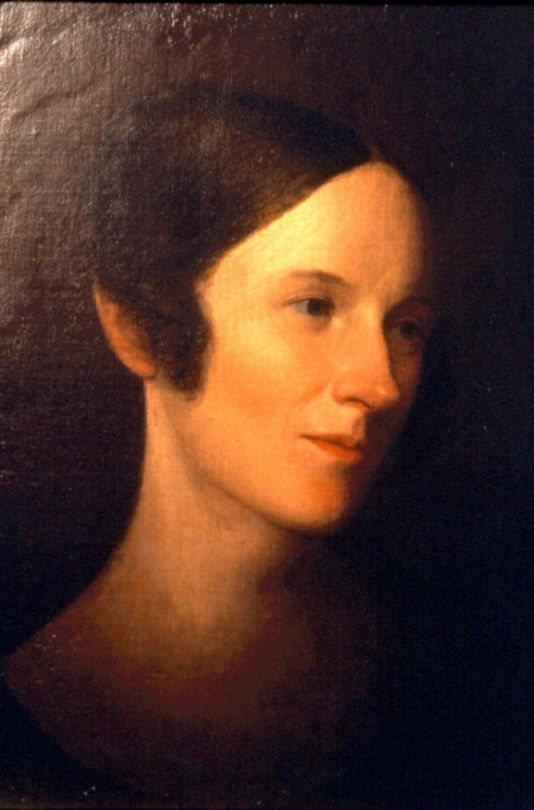
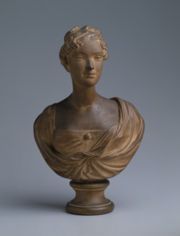
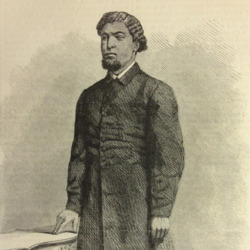
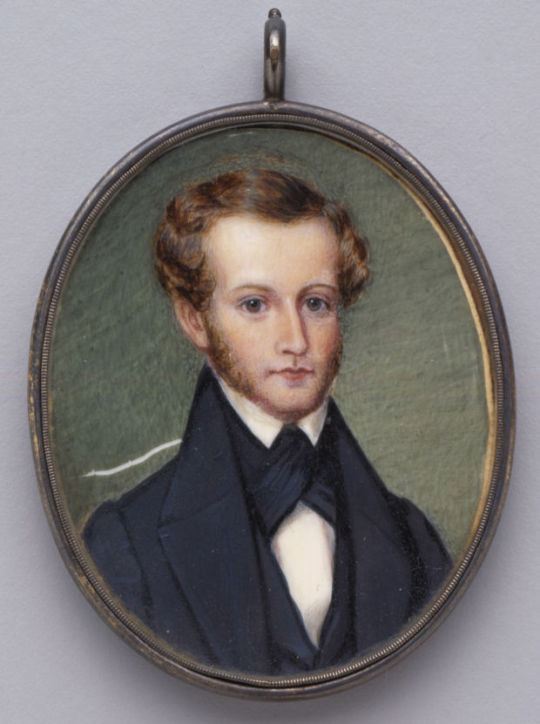
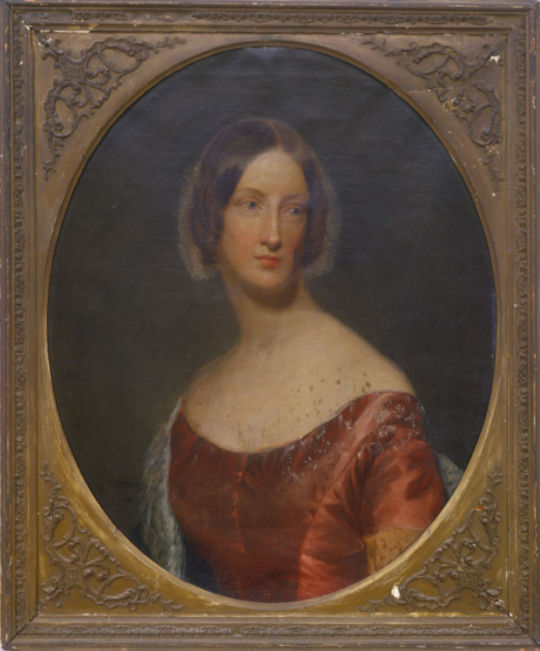
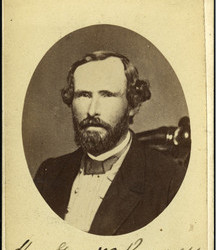
Randolph Family
1) Martha “Patsy” Jefferson Randolph (1772 – 1836), Thomas Sully, unknown
2) Thomas Mann Randolph Jr (1768 - 1828), unknown, unknown
3) Ann Cary Randolph (1791–1826), James Westhall Ford, 1823
4) Thomas Jefferson Randolph (1792–1875), Charles Wilson Peale, unknown
5) “Eleanor/a” Ellen Wayles Randolph (1796–1876), most likely a Peale, unknown
6) Cornelia Jefferson Randolph (1799–1871), William Coffee, 1819
7) Benjamin Franklin Randolph (1808–1871), unknown, unknown
8) Meriwether Lewis Randolph (1810–1837), unknown, unknown
9) Septimia Anne Randolph (1814–1887), unknown, unknown
10) George Wythe Randolph (1818–1867), David H. Anderson, 1866
Not Pictured: Ellen Wayles Randolph (1794–1795), Virginia Jefferson Randolph (1801–1882), Mary Jefferson Randolph (1803–1876), James Madison Randolph (1806–1834)
#ellen is my favorite#Martha Jefferson randolph#patsy jefferson#Thomas mann randolph#Ann Cary Randolph#Thomas Jefferson Randolph#ellen Wales randolph#Cornelia lewis randolph#meriwether lewis randolph#septimia anne randolph#George wythe randolph#virginia Jefferson randolph#mary Jefferson randolph#james madison randolph
108 notes
·
View notes
Text
My opinion on what kinks the Founding Fathers would have
This is my opinion. Don’t argue because I’m right. These are also based on people I have like, taken interest in. I’m not uploading every single founding father ever.
Do not ask me to explain. I simply don’t know anymore
Hamilton: mommy kink, switch, slapping
Jefferson: pegging, bondage, sensory deprivation, orgasm denial
Washington: daddy kink, praise, submissive top
Madison: piss, pegging
Greene: submissive top, breasts
Knox: voyeurism, public sex, dirty talk
Franklin: degradation, bondage, knowledge, cnc
Monroe: scat, somnophilia
Burr: sounding, pegging, milking
Randolph: pretty vanilla, but likes doggy style position
Wythe: temperature play, role play
Jay: masochism, bondage
Adams: puppy play, ownership, body worship
Rush: blood/knife
Paine: food play, sadism
#thomas jefferson#george washington#alexander hamilton#amrev#hamilton the musical#aaron burr#james madison#henry knox#nathanael greene#benjamin franklin#james monroe#edmund randolph#George wythe#john jay#john adams#benjamin rush#thomas paine
80 notes
·
View notes
Note
How many Founding Fathers are there actually? Nobody can agree on a number, I’ve seen it ranging from the most popular handful to over 50. What’s the correct number? Sorry if this is a stupid question, I’m not much of a history person heh
The reason you can’t find a specific number is because there’s not, like, a “canonized” recognition of the exact quantity of founders based on a rubric. Some people think it describes the entire generation of American political and military figures who were active until around 1800. So, theoretically, there’s hundreds if not thousands of men who could qualify as “founding fathers.” (Even more if we call this aggregate simply “the founders” and include the women who also played an important role).
When I personally open a discussion about “Founding Fathers,” I’m generally talking about roughly ten “high-profile” individuals: Washington, Adams, Jefferson, Madison, Hamilton, Franklin, and sometimes Burr and Monroe. But of course there are what you might call “B-listers,” Patrick Henry, Nathan Hale, Sam Adams, John Jay, John Hancock, John Paul Jones, etc. And then furthermore, individuals who were a part of the movement but, for whatever reason, are categorized as “obscure”; George Mason, Roger Sherman, George Wythe, Robert Livingston, Timothy Pickering, Edmund Randolph, etc. There’s also an unquantifiable number of people who contributed to the movement of American independence whose names are lost to posterity.
Tl;dr: There’s no "correct number.” It just depends on who you ask or what your personal criteria is.
39 notes
·
View notes
Photo

Daily Waypoint | N 37° 16′ 16.50″ W 76° 42′ 0.00″ James Craig Jeweller Shop—Seen at Colonial Williamsburg a living-history museum and private foundation presenting part of an historic district in the city of Williamsburg, Virginia. Colonial Williamsburg's 301-acre Historic Area includes buildings from the 18th century (during part of which the city was the capital of Colonial Virginia), as well as 17th-century, 19th-century, and Colonial Revival structures, as well as more recent reconstructions. The Historic Area is an interpretation of a colonial American city, with exhibits of dozens of restored or re-created buildings related to its colonial and American Revolutionary War history. One of the largest history projects in the nation and a tourist attraction, it is part of the Historic Triangle of Virginia, which includes Jamestown and Yorktown, linked by the Colonial Parkway. It was designated a National Historic Landmark District in 1960. Costumed employees work and dress as people did in the era, sometimes using colonial grammar and diction. Prominent buildings include the Raleigh Tavern, the Capitol, the Governor's Palace, as well as the Courthouse, the George Wythe House, the Peyton Randolph House, the Magazine, and independently owned and functioning Bruton Parish Church. Colonial Williamsburg's portion of the Historic Area begins east of the College of William & Mary's College Yard. https://www.fmgphoto.com/Feature-Special-Galleries/n-W7xDfN/Colonial-Williamsburg/i-pGS8dpr/A https://followingmygps.com/colonial-williamsburg/ #ColonialWilliamsburg #WilliamsburgVirginia #livinghistorymuseum #museum #Colonial #ColonialVirginia #HistoricTriangle #Colonialcapital #HistoricLandmark #jamescraigjeweller #colonialwilliamsburgva #colonialjewellery #discoveramerica #travelpics #travellife #travelinspiration #travelblog #travelphotography #fmgphoto #followingmygps #travelphotography #traveller #photography #travelamerica #lifestyle #LifeWellLived #travelmagazine #roadtripping #exploring #roadtrip (at Colonial Williamsburg) https://www.instagram.com/p/CD606Y3MKjA/?igshid=je3n1szet38f
#colonialwilliamsburg#williamsburgvirginia#livinghistorymuseum#museum#colonial#colonialvirginia#historictriangle#colonialcapital#historiclandmark#jamescraigjeweller#colonialwilliamsburgva#colonialjewellery#discoveramerica#travelpics#travellife#travelinspiration#travelblog#travelphotography#fmgphoto#followingmygps#traveller#photography#travelamerica#lifestyle#lifewelllived#travelmagazine#roadtripping#exploring#roadtrip
1 note
·
View note
Photo

Thomas Jefferson’s teacher and mentor, George Wythe, died in 1806. Wythe was one of our nation’s founding fathers, having signed the Declaration of Independence and having been instrumental—as a lawyer, law professor and judge—in bringing the rule of law to the new republic. His students included Chief Justice John Marshall, James Madison, John Tyler and James Monroe. His friends included George Washington and John Adams. He was called “the Cato of his Country” and “one of the greatest men of the age.”
He was almost certainly murdered by his grandnephew, who was a beneficiary of his will. But there was a problem. The eyewitness was a freed former black slave, and the laws of Virginia precluded any black witness, freed or slave, from testifying against white defendants.
The trial was a sensation, perhaps the most dramatic criminal trial in the young country until the prosecution of Aaron Burr. The lawyers were among the most celebrated in early American history, including Edmund Randolph and William Wirt. The medical experts, who performed the primitive autopsies, were also among the most distinguished in a country with few experienced doctors. Everybody, from President Jefferson on down, knew and loved George Wythe and followed the events in the newspapers.
Our edition is beautifully bound in leather and contains an exclusive introduction by Prof. Alan Dershowitz.
To purchase visit our website!
https://gryphoneditions.com/index.php/special-sales/i-am-murdered-the-trial-of-the-george-wythe-assassin-detail
#books#leatherboundbooks#law#history#american history#notable trials#gryphon editions#books and libraries#currently reading#reading is fundamental#reading is cool#george wythe#founding fathers#law history#courts
8 notes
·
View notes
Text
John Minor Botts Requiem to the State of Virginia
By: Lisa Timmerman, Executive Director
“They regarded me as treacherous to the South, I held them as madmen, false to the nation, false to the Constitution, false to their obligations of duty, and especially false and faithless (in fact, whatever might have been their purpose) to every interest most cherished by the Southern people; and whether they did me or I did them the greater injustice, a more unprejudiced judgment may not be formed than then.” So wrote John Minor Botts in his autobiography recalling his staunch commitment to the Union and the United States government before and during the Civil War. Born in Dumfries in 1802 to Benjamin and Jane Botts, he did not remain in Dumfries long after their death, instead placed in the care of other Virginia relatives. His strong political views combined with his love of the Union and inability to not share his political beliefs, led to a powder keg in 1862 when the Confederate government attempted to force and intimidate anyone not loyal to the Confederacy.
John Minor Botts identified as a Unionist, someone who supported the preservation of the United States government through secession and often the Civil War. However, this label was fickle as the meaning changed over time and region. While some Unionists joined this party in the pursuit of liberty for enslaved persons, others feared the economic consequences of secession viewing slavery and secession as two different issues. John Minor Botts abhorred Virginia’s secession writing, “Now that the greatest and best government the world has ever known has been destroyed by wicked, reckless, and corrupt demagogues, I can do nothing but mourn over this consummation of human folly, until I may be called on to fight for Virginia in a struggle which I had no hand in bringing on.” He did not have to wait long as his vocal opposition to the Confederate government led to his arrest on in March 1862 following the Confederate government’s suspension of the writ of habeas corpus.

(Auburn, Residence of John Minor Botts in Culpeper, Virginia)
The Confederate government had begun stripping Virginia’s civil liberties the previous year with The Alien Enemies Act, which allowed officials to arrest and deport anyone who did not acknowledge themselves as loyal to the Confederacy. The Sequestration Act allowed officials to seize property of any non-Confederate citizens. The suspension of the writ of habeas corpus from 02/1862 – 02/1863 allowed officials to hold a prisoner indefinitely without submitting evidence to the court, characterized by Botts as “putting a padlock upon every man’s mouth, and thus annihilating all freedom of speech”. Considering Botts referred to Jefferson Davis as “the most unscrupulous despot that has appeared since the days of Nero” and Botts inability to keep said padlock upon his mouth, it did not take long for officials to arrest and place him in jail after sending a detachment of forces to surround his home to block escape. The Richmond Enquirer reported that “a dangerous enemy was safely housed at the expense of the Confederate government” and Botts recorded in his autobiography that he spent eight weeks in solitary confinement eventually allowed to “supply my own necessities and comforts”. As officials continued arresting people and confining them in harsh conditions, the Confederate Congress restricted trade in the fall of 1862 with the creation of the civilian pass system, which required the approval of national authorities to leave the area for everyone not granted an exemption – aka everyone not in the Confederate Congress. Congress also prohibited the sale of liquor in 1862, these measures directly impacting civilians vs. the usual restrictions and demands placed upon soldiers and draftable men.
On 03/22/1862, Botts wrote to the then Confederate Secretary of War, George Wythe Randolph, ultimately demanding an investigation in a lengthy letter that detailed his experience and opinion of the Confederacy. Hint: It was not favorable. “He [General Winder] said I was charged with being at the head of a large organization in Richmond, of attending its nightly meetings, the object of which was to break down the Confederate government, and that I was known to be hostile to the government. I said, General Winder, if I am amenable to this government for my private opinions upon political subjects – if it is an offense against any law to believe that no state had a right to secede from the Union, then I am liable to the penalties of that law; if to believe there was no sufficient cause for the exercise of the right, if such right existed, then, too, have I incurred the penalties of the law; and if, conceding the existence of both right and cause, I still believed that secession and revolution were not the rightful remedies, and that I had never been able to see how it was at all likely to come to a successful termination, then, too, was I liable to all the penalties the law prescribed; for all this I had believed, said, and written, in every variety of form, for thirty years before the war, and nothing had occurred to change them since.” Botts agreeably discussed the letters and efforts he went to in order to keep Virginia in the Union but denied knowledge of or participation in any secret conspiratorial group. “…as I desire no political preferment, I really do not covet, and for the enjoyment of which I would not exchange one hour of that civil, religious, political, and personal freedom that I inherited from my ancestors, and I vainly hoped had been secured for life – a freedom won by the toil, the sufferings, and the blood of my forefathers; a freedom for which your own illustrious grandsire was an able and efficient champion; a freedom thus inherited no power under the sun has a right to dispossess me of except for some violation of law; and if this newly-organized government of yours claims such right, I am both free and proud to say that I abjure it now and forever; in life and in the struggles of death will I abjure it.” It should be noted that Botts participated in an underground spy network led by Elizabeth Van Lew in Richmond.
On 04/25/1862, the War Department reported their investigation into Botts’ alleged crimes and decided it was “compatible with public safety” to release him as long as he remained within the interior of Virginia within 5 miles of his residence “and that, while on parole, he will do nothing to the injury of the Confederate government, nor express any opinion tending to impair the confidence of the people in the capacity of the Confederate States to achieve their independence.” Botts agreed to these terms but filed a written protest on record arguing against his arrest, detainment, and the supposed attempt to commission him as brigadier general in the Confederate Army. After officials rejected Botts request to leave the state, he settled at Auburn in Culpeper County.

(Auburn, Kitchen, Residence of John Minor Botts in Culpeper, Virginia)
Did Botts keep quiet after his arrest? Did Confederate soldiers occupy his new residence respectfully during the remainder of the Civil War? As you probably can guess, it is a screaming “no” on both accounts, although we will save another deep delve into his life for another time.
Note: The Weems-Botts Museum is officially open for tours – check out our online tour schedule here! While no tours are currently available this Saturday, our free Children’s Day at the Museum program will be held in the Annex – the first time since 2019! Children can craft small sachets for gifts and learn more about our grounds and gardens through this and our scavenger hunt activity. Find more info here! Tickets and face masks required.
(Sources: Botts, John Minor. The Great Rebellion: Its Secret History, Rise, Progress, and Disastrous Failure. New York: Harpe & Brothers, 1866.; Wolfe, Brendan. "Unionism in Virginia during the Civil War" Encyclopedia Virginia. Virginia Humanities, (05 Feb. 2021). Web. 04 May. 2022; Flook, Jim. "Civil Liberties in Virginia during the Civil War" Encyclopedia Virginia. Virginia Humanities, (07 Dec. 2020). Web. 04 May. 2022; The Richmond Enquirer, 03/04/1862 via Civil War Richmond https://www.civilwarrichmond.com/written-accounts/newspapers/richmond-enquirer/2415-1862-03-04-richmond-enquirer-john-minor-botts-and-franklin-stearns-arrested-richmond-under-martial-law)
0 notes
Text
Such is life! Behold, a new Post published on Greater And Grander about We Must Stop Putting Our Heroes on Pedestals, For They Topple Too Easily
See into my soul, as a new Post has been published on http://greaterandgrander.com/2020/10/we-must-stop-putting-our-heroes-on-pedestals-for-they-topple-too-easily/
We Must Stop Putting Our Heroes on Pedestals, For They Topple Too Easily
As is the custom in an election year, I keep getting into fights on Facebook over political matters. Because of the online spaces I inhabit, the general theme is, Joe Biden is a terrible candidate, and not a true progressive, and not as good as Bernie Sanders.
The unfortunate mistake that Bernie Sanders supporters keep making is that they put him on a high pedestal that nobody else can climb to. Now I'm not saying Bernie Sanders is a bad guy, I'm simply saying that some see him as perfect, and unimpeachable, and that is just not true. First off, Bernie Sanders likes rape. In 1972, when he was 31, Sanders wrote a fictitious essay in which he described a woman enjoying being raped by three men. In addition to that, Bernie Sanders turned his back on Tara Reade, and endorsed Joe Biden for President after his campaign encouraged her to come out and make false allegations. Bernie also co-sponsored a bill to ship Vermont's nuclear waste to a poor Hispanic community in Texas, which earned him the label of environmental racist. Also on the list: Sanders violated campaign finance laws, criticized Clinton and Biden for supporting the 1994 crime bill that HE HIMSELF voted for, and he voted against the Amber Alert system which has saved over a thousand children from being kidnapped.
Now, I'm not writing this article to humiliate Bernie Sanders. Bernie's done a good enough job of that on his own. What I'm trying to articulate is that we must recognize that our heroes are flawed human beings, just as we are.
Merriam Webster has 5 or 6 definitions for Hero. Most of them have to do with perfect figures of heroism, idols worthy of worship, etc. However, the two definitions I like most are:
c: a person admired for achievements and noble qualities
d: one who shows great courage
It's not just that I like these definitions, but I think it's important we remember these definitions. Heroes are real people, with flaws just as strong as their virtues. Sometimes the bigger the hero, the bigger the flaw.
Now you may say I'm wrong, but let me provide some salient examples.
Stephen Hawking was a womanizer who cheated on his wife. So was Martin Luther King, Nelson Mandela, JFK, Jackson Pollock, and Pablo Picasso.
Michael Jackson, Charlie Chaplin, and Woody Allen were all sexual predators who enjoyed the company of children.
Ghandi was, by all accounts, a terrible father, and also really racist towards black people when he was a lawyer in South Africa.
FDR instituted Japanese internment camps, and he was supported by Dr. Seuss. Yes, Dr. Seuss was a racist sonofabitch. Harry Truman would be considered by some to be a war criminal for using the nuclear bomb on Hiroshima and Nagasaki.
Henry Ford, Roald Dahl, and Woodrow Wilson were irredeemable racists, and anti-semites.
The Dalai Lama is in favor of world peace, and even wants to protect the whales, but believes abortion is unacceptable, and an act of killing. However, he has stated that abortion is acceptable "if the unborn child will be retarded" but at least he wants to protect the whales.
Mother Teresa's missions, despite having tons of charitable donations at their disposal, rarely — if ever — actually helped poor, sick people become healthy. In fact, most of these places, according to a 2013 paper published in Studies in Religion, were dirty, short on doctors, low on food, and largely bereft of painkillers. Nevertheless, Teresa found the suffering beautiful, like it was making the world a better, holier place. We know this because she said it to the famously anti-religious writer Christopher Hitchens: "There is something beautiful in seeing the poor accept their lot, to suffer it like Christ's Passion. The world gains much from their suffering."
Jackie Chan is actually hated by many people in China for supporting the authoritarian Chinese government of Xi Jinping. Other Chinese stars have supported authoritarian actions, like Chinese actress, and star of Disney's Mulan, Liu Yifei.
Bill Gates, as highlighted in the Netflix documentary, Inside Bill's Brain, he was indicted for anti-Monopoly laws, and wants to open up a new generation of Nuclear power plants, which when they go bad, they REALLY go bad. His rival, Steve Jobs, was an egomaniacal narcissist.
And if you're thinking, 'well, those are all left-wing, bleeding heart liberals, my heroes are unimpeachable' I'd like to remind you that early in his administration, Abraham Lincoln advocated for sending African-Americans back to Africa. Conservative prime minister, Winston Churchill, was a terrible white supremacist.
John Wayne (who drove many innocent people to suicide through his support of the Hollywood Blacklist) in a 1971 interview with Playboy magazine, Wayne admitted he didn't like African-American people (or "the blacks" as he constantly called them) being in charge of anything because white people are apparently the only people who know what they're doing. As he said in the interview, "I believe in white supremacy until the blacks are educated to a point of responsibility. I don't believe in giving authority and positions of leadership and judgment to irresponsible people."
Also, here is a list of the 68 out of the 149 founding fathers who owned slaves.
Abraham BaldwinGeorgiaArthur MiddletonSouth CarolinaBenjamin HarrisonVirginiaButton GwinnettGeorgiaCaesar RodneyDelawareCarter BraxtonVirginiaCharles Carroll of CarrolltonMarylandCharles Cotesworth PinckneySouth CarolinaCharles PinckneySouth CarolinaChristopher GadsdenSouth CarolinaCornelius HarnettNorth CarolinaDaniel CarrollMarylandDaniel of St. Thomas JeniferMarylandEdmund PendletonVirginiaEdward LangworthyGeorgiaEdward RutledgeSouth CarolinaEdward TelfairGeorgiaFrancis Lightfoot LeeVirginiaGeorge ReadDelawareGeorge WaltonGeorgiaGeorge WashingtonVirginiaGeorge WytheVirginiaGunning Bedford Jr.DelawareHenry LaurensSouth CarolinaHenry MiddletonSouth CarolinaHugh WilliamsonNorth CarolinaJacob BroomDelawareJames MadisonVirginiaJames McHenryMarylandJohn BanisterVirginiaJohn BlairVirginiaJohn DickinsonDelawareJohn HansonMarylandJohn HarvieVirginiaJohn MathewsSouth CarolinaJohn PennNorth CarolinaJohn RutledgeSouth CarolinaJohn WaltonGeorgiaJohn WilliamsNorth CarolinaJoseph HewesNorth CarolinaLyman HallGeorgiaMatthew TilghmanMarylandNicholas Van DykeDelawarePatrick HenryVirginiaPeyton RandolphVirginiaPierce ButlerSouth CarolinaRichard BassettDelawareRichard BlandVirginiaRichard CaswellNorth CarolinaRichard Dobbs SpaightNorth CarolinaRichard Henry LeeVirginiaRichard HutsonSouth CarolinaSamuel ChaseMarylandThomas AdamsVirginiaThomas Heyward Jr.South CarolinaThomas JeffersonVirginiaThomas JohnsonMarylandThomas LynchSouth CarolinaThomas Lynch Jr.South CarolinaThomas McKeanDelawareThomas Nelson Jr.VirginiaThomas StoneMarylandWilliam BlountNorth CarolinaWilliam FewGeorgiaWilliam Henry DraytonSouth CarolinaWilliam HooperNorth CarolinaWilliam JacksonSouth CarolinaWilliam PacaMaryland
Also, how many popes turned a blind eye to child molestation and child rape all around the world?
#Bernie2020, #BernieSanders, #NonComicBookSuperhero, #Politics, #Superhero
1 note
·
View note
Photo

#Repost @leaveittocleaverphotography ・・・ "happiness depends more upon the internal frame of a person's own mind, than on the externals of the world"-george washington 🇺🇸 📷: General George Washington Fun Facts about General Washington's time in Williamsburg 🔹In 1759, 27-year-old George Washington took a seat in the House of Burgesses in the Capitol and helped shape the idea of self-government for the next 16 years. 🔹He dined with such locals as George Wythe and Peyton Randolph. 🔹He worshipped at Bruton Parish Church. 🔹He enjoyed congenial evenings at the Raleigh, King's Arms, and Christiana Campbell's taverns. 🔹He patronized Williamsburg's tradesmen. (information from history.org) #leaveittocleaverphotography #travelphotography #vacation #historybuffs #timetravel #history #learnfromthepast #commanderinchief #horse #dogstreet #adventure #williamsburgva #huzzah #traditions #letsexplore #funfacts http://ift.tt/2jq1jeO
4 notes
·
View notes
Photo

Ratification of the Constitution
On this site the Virginia
Convention ratified the
United States Constitution
June 25, 1788
In the ratifying Convention were
Edmund Randolph - James Madison
George Wythe - Henry Lee
John Marshall - Patrick Henry
George Mason and James Monroe
The Virginia delegates to the
Federal Convention were
George Washington - James Madison
Edmund Randolph - George Mason
George Wythe - James McClurg
and John Blair
Twelfth Street between Marshall & Broad Streets, facing east
August 2017
2 notes
·
View notes
Text
When you think of the Revolutionary War and the colonies fight for freedom, what cities come to your mind? Most people go straight for Philadelphia, Boston, and even New York City. However, hidden in the eastern coast of Virginia, right by the very spot where the colonies began their foundation in Jamestown lies the little town of Williamsburg, Virginia. Named for King William III of England when the state capitol was moved from Jamestown in 1699, today Williamsburg is a bustling city with theme parks and history all around. No words can describe the magic you feel while there, I’d compare it to that childish excitement you get when going to Disney World for the first time. However, few people seem to realize what a crucial role that this small-ish city seemed to play in the founding of our nation.
For 81 years (1699-1780) Williamsburg ruled as Virginia’s capital after the House of Burgesses decided to leave Jamestown. Many of the founders of America and major players of the American Revolution, such as George Washington, Patrick Henry, Thomas Jefferson, George Mason, and Peyton Randolph (to name a few), spent time here. In 1926, the Reverand of Bruton Parish Church, W.A.R. Goodwin and John D. Rockefeller Jr. began restoration of what is now Colonial Williamsburg. It reopened as a histrocial location in 1933 and has been providing educational services and constant preservation of the once important town since.

I’ve been to Colonial Williamsburg multiple times and I never truly get to see everything it holds. Each season holds new activities for children of all ages and new set ups in the buildings open for viewings. There’s history filled fun starting at William and Mary College and stretches all the way down Duke of Gloucester Street to the Capitol building. Duke of Gloucester Street happens to be the main street that leads straight through the center of the hustle and bustle of Colonial Williamsburg and was once strolled down by the likes of Patrick Henry, Peyton Randolph, George and Martha Washington, and even Thomas and Martha Jefferson. It’s seen soldiers held up as they were fighting for freedom a few miles away during the Battle of Yorktown in the most crucial time of the Revolutionary War. Almost every building is focused around Duke of Gloucester Street and if it’s not, the road to it is directly connected. Strolling down the street yourself, is like you’re being immersed back in to the 1700’s. The costumes, the characters, the sites! The experience of walking next to a horse drawn carriage towards a tavern while people in modern and colonial clothing hustle by you is otherworldly. Seeing the market place and being able to buy goods from an open market right off the street is a rare experience in modern times but to be buying fresh fruits and vegetables (all grown from the colonial garden) is even an experience the Royalist would enjoy.
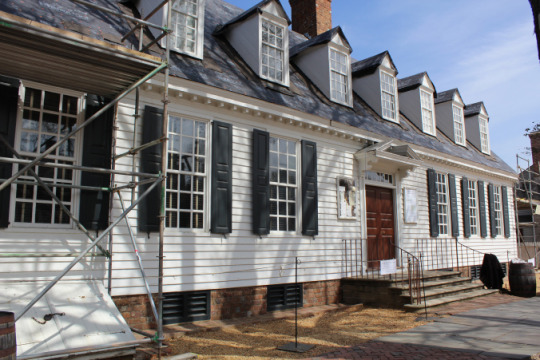
Raleigh Tavern is a site that you may miss if you’re hurrying by to the bigger attractions or under the assumption that it’s not open due to the construction equipment currently surrounding it. However, the construction is simply due to new archaeological evidence that the tavern had a porch on the front and although it may not look like much, Raleigh Tavern has such an important history to Virginia and the founding of the United States. Built in 1717 and given the namesake for Sir Walter Raleigh who founded the lost colony of Roanoke Island, the Tavern has seen many popular faces come and go. In 1773 the House of Burgesses met in the Apollo Room and began writing letters to unite the colonies against the rule of the British. Included in these events were two young lawyers, Thomas Jefferson and Patrick Henry. Parties were often thrown at the Tavern, as well, including one that a recent William and Mary graduate (Thomas Jefferson) attended and subsequently embarrassed himself in not being able to talk to the beautiful hostess of the party. After the Battle of Yorktown, people celebrated from the Capitol building at the top of Duke of Gloucester street down to Raleigh’s Tavern to celebrate the miraculous surrender of the British and the signing of the Treaty of Paris. In 1824, Marquis De Lafayette, whom you should know fairly well if you’re an avid follower of Broadway’s Hamilton: An American Revolution, returned to Williamsburg for the first time since the signing of the Treaty of Paris and was treated to a feast to honor him. Even if you ignore the amazing figures who walked the halls of the tavern or even the beautiful architecture of the renovated building, you will definitely the appreciate the delicious pretzel rolls that are sold inside!

Also located off of Duke of Gloucester street, is the beautiful Bruton Parish Church. Built in 1660, long before Williamsburg was thought of, and currently still an active church with the much bigger Williamsburg bustling around it. There were quite a few influential faces that attended church here including Thomas Jefferson, George Mason, George Washington, George Wythe, and Patrick Henry. In 1781, the church was used as either a Storehouse or a hospital during the siege of Yorktown; and was used again during the Civil War as a hospital during the Battle of Williamsburg. Many prominent people in Williamsburg society are buried in the graveyard behind the church including two of Martha Washington’s infant children from a previous marriage. It is also said that Nathaniel Bacon buried his fortune under one of the graves in the cemetery. Although that can be neither confirmed or denied, what can be denied is that is definitely a site you can not miss out on.
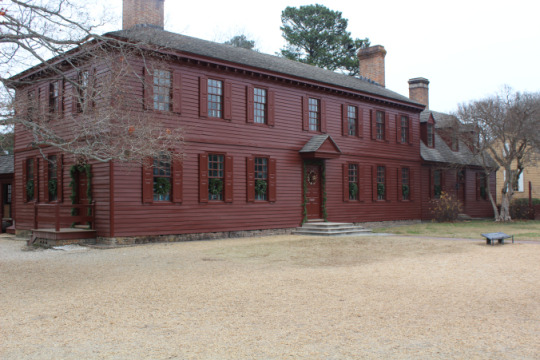
If you’re interested in Historical Haunts then the Peyton Randolph house is just right for you. Built in 1715 by William Robertson and eventually bought by the Randolph family, this house has had little reconstruction to it. Much of original house is still standing and according to most, insanely haunted. A few deaths have been reported on the grounds that the house stands on. The reasons for the haunting are usually related to either being built on a Native American burial ground or the curse put on the house by a slave who was killed by the lady of the house. People like George Washington, Marquis de Lafayette, and General Rochambeau were stationed here while preparing for the siege of Yorktown. It was Lafayette who claimed to have been awoken in the middle of the night by unexplained voices and feeling a heavy hand rest upon his shoulder while staying there during his US Tour in 1824. Personally, I’ve been in the Peyton Randolph house once and it was enough for me. Upon entering it was beautiful with the character telling an intriguing and heart wrenching story of the slaves kept here but I also felt such heaviness unlike anything I’ve ever felt before. It became hard for me to breathe and I got dizzy and hot. We got to a parlor room on the second floor and I immediately collapsed into a chair to listen to the last bit of the story before descending the stairwell that was still original to the home. We left the house and crossed the street and I instantly felt like a weight was lifted. I felt normal. I haven’t been back in the house since that trip in December and it gives me the goosebumps just thinking about being back in that place again. Who knows what we will experience on our trip July!

Another spooky spot in Colonial Williamsburg is the George Wythe house. Although not even a bit as heavy as the Peyton Randolph house, it was more historically important than spooky even when taking the ghost stories in to account. During the siege of Yorktown, the George Wythe home was used as George Washington’s headquarters and if you visit Colonial Williamsburg in December, they have the whole home set up as it would have been while Washington was stationed there. It was also used as temporary housing for troops and Rochambeau. The tour through the home and gardens are an incredible experience. The grounds on which the house sits is a beautiful site to see and you absolutely can’t miss seeing the chicken coop! If you’re looking for a more mild haunt filled with incredible history, I definitely suggest the George Wythe house.

The Capitol building became the capitol after the Statehouse in Jamestown burned down for a second time and the House of Burgesses moved to Williamsburg. In May of 1765 it was here that Patrick Henry proclaimed “Caesar had his Brutus, Charles the First his Cromwell, and George the Third-“, here is where everyone caught on to where this was going and started calling Henry Treasonous. However, Henry took a breath and finished with “…may profit by their example. If this be treason, make the most of it”. On May 15, 1776 the Capitol building is housing the House of Burgesses wherein that meeting Virginia declared they wanted American Independence and Thomas Jefferson began writing the Declaration of Independence from the records that were kept during that session with the continental congress. The Capitol was then used until December 24, 1779 when the House of Burgesses decided that they will reconvene in May in the new Capitol of Richmond, Virginia. The Capitol building is one of the best attractions to visit at Colonial Williamsburg. The guides are extremely intelligent and paint the story of the founding of our country beautifully. It is also one of the most kid friendly tours and our 7 year old loved the tour! If you’re taking a family trip, the Capitol is to not miss!
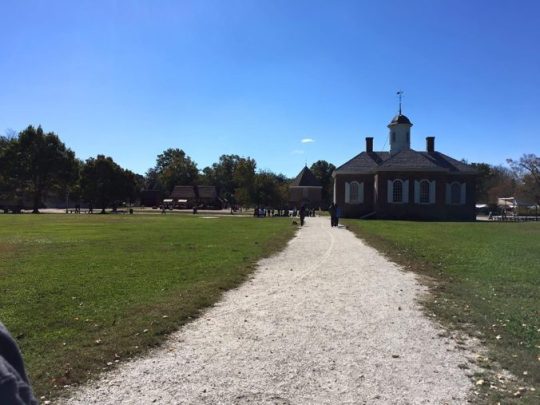
The Courthouse had two significant events happen on its steps. Benjamin Waller read the Declaration of Independence on steps, as well as, the Treaty of Paris was announced here. With the signing of the treaty, we effectively ended the Revolutionary War. I haven’t yet had the pleasure of touring the Courthouse but it is a beautiful building. We are planning on visiting it in July for our next trip and I will be able to post a more effective blog post about the Courthouse then!
This slideshow requires JavaScript.
My favorite place in all of Colonial Williamsburg is the Governor’s Palace. This was the home to all of the Royal Governor’s during the British Reign as well as Patrick Henry during his term as governor and then his successor Thomas Jefferson, who drew up plans to remodel, before the Capitol was moved to Richmond due to the war. So many beautiful balls and parties were constantly being held here where Virginians would commonly dance til 6-7am. During the siege of Yorktown, the palace was used as General Charles Lee’s headquarters until it was needed for a hospital. Behind the palace are elaborate gardens. In the garden off to the left from the back door, you will find a plaque to honor the 156 men and soldiers and two women that were buried in the garden during the war. The Governor’s Palace holds many original artworks and beautifully creative rooms. A room filled with swords and muskets, the bright blue of the ballroom, the red of Lady Dunmore’s room. It’s a sight that absolutely no one should ever miss!

The magazine was used to store guns, ammunition, and other equipment needed for raids on the city. This little building sparked the American Revolution for Virginians. The night of April 20, 1775 Lord Dunmore, the British Governor at the time, ordered Lieutenant Henry Collins and the Royal Marines to empty the magazine and destroy the muskets after he became worried after hearing word of Patrick Henry’s infamous ‘Give me Liberty or Give me Death!” speech just days earlier. On April 27th, The word of the first shots fired had reached the town of Williamsburg. Patrick Henry rallied a group of militiamen to petition for restitution of the gun powder that Lord Dunmore had stolen from the magazine. Their restitution was granted. However, either late in the night on June 3rd or early morning June 4th, two young men snuck in to the magazine and were wounded by a booby trap set up. When news spread, a mob stormed the building on June 5th. The mob managed to chase Lord Dunmore from Williamsburg on June 8th bringing about the end of British rule in Virginia. The magazine is an absolutely remarkable place to go to see weapons used during the 1700’s. It is a very narrow and small space with lots of steps, so if that doesn’t sound fun to you, I would recommend checking out the market place beside it while the rest of your family enjoys it!
This slideshow requires JavaScript.
The last place I’m going to be talking about is Public Gaol (Jail). This was one of the first buildings requested to be built when Williamsburg was named the new capitol of Virginia. It has housed many prisoners including 15 of Blackbeard’s pirates! It’s a very short tour with the building being relatively small, however two of the original cells are still standing and then there are two recreations. They are fantastic to go in and view what jail felt like then. There is also a debtors cell located in the jailers house. It’s definitely a lot nicer than the outdoor cells. Also if you’re in to TV, a sequence from Sons of Liberty was filmed at the Public Gaol as well as the TV show Turn: Washington’s Spies on AMC has filmed quite a few times at Colonial Williamsburg!
This slideshow requires JavaScript.
Not to pick on my fiance too much, but it’s come to my attention that many people don’t want to take the time to appreciate these remarkable buildings and the significance to this country that they hold. People tend to skip over places like Colonial Williamsburg because they want to sit on a beach or they’re afraid the kids won’t want to learn during a vacation. I’m here to tell you that Colonial Williamsburg is one of the most remarkable vacation spots. My daughter loves the experience and being able to even teach her teachers the things she’s learned while here. The photo opportunities are listless and the food is A+ (I especially recommend Chowning’s Tavern). Tickets are $40.00 for entrance to all the tours, however you can simply walk around and enjoy the sites and restaurants for free! Colonial Williamsburg is a home away from home for me and it means so much to my family that I’d like it to be around for generations to come. So at the end of every blog post, I’d like to link to the donation pages of each place I am writing about. We need to keep these sites preserved so everyone gets an equal opportunity to experience the history of this incredible country.
Thank you for taking the time to learn more about Colonial Williamsburg!
If you’d like to donate to the Colonial Williamsburg Foundation Click Here
*All photos in this article are owned by writelovemakehistory/khicksphotography*
Sources:
Patrick Henry’s Speech
History Facts about Colonial Williamsburg
Colonial Williamsburg: The Revolutionary City When you think of the Revolutionary War and the colonies fight for freedom, what cities come to your mind?
#America#blog#blogger#blogging#Colonial Williamsburg#Colonial Williamsburg Foundation#Donate#Founding#Founding Fathers#George Washington#historic#History#my writing#Non-Profit#Photography#Revolutionary War#Sited#Travel#USA#virginia#williamsburg#write#writelovemakehistory
1 note
·
View note
Text
Founding Dissenters: Non-Signers of the Constitution
By Sebastian van Bastelaer, Program Manager
In total, 73 men were appointed to attend the Constitutional Convention in 1787 (55 attended in total). Yet only 39, or slightly more than half, ended up signing on September 17. Who were the 34 who didn’t, and why?
Of the nearly three dozen non-signers, 15 declined their appointment to the Convention. These included such notable statesmen as Richard Henry Lee and Patrick Henry of Virginia, Henry Laurens of South Carolina, Francis Dana of Massachusetts and Charles Carroll of Maryland. Law professor Michael J. Klarman opines that many appointed delegates believed nothing would come out of the meeting. Others, not fathoming the ambitious goals of some delegates, did not believe it worth their time to partake in “a project to mildly expand the government’s power.”[i] In any event, the 15 who declined their appointment contained some who supported and some who opposed eventual ratification.
Sixteen delegates attended the Convention, but left before its proceedings were complete. Some took an active role in the deliberations but were absent from the signing. These included George Wythe and James McClurg of Virginia, Oliver Ellsworth of Connecticut, Caleb Strong of Massachusetts, William Pierce of Georgia and Alexander Martin and William Davie of North Carolina. As many delegates came and went frequently to deal with other business (Strong, for example, had to tend to his ailing wife), these non-signers were not exceptional.[ii] Each ended up supporting the Constitution, and many played significant roles in the new government—Ellsworth served as the nation’s third Chief Justice, for example.
Of far more interest are those who left early for political or ideological reasons. Luther Martin of Maryland “greatly regretted” the rule that bound delegates to secrecy and resented the efforts of “Virginia and other large States, to increase their power and influence over the others,” singling out specifically the Virginia Plan.[iii] Luther and his colleague, John Francis Mercer, both left the Convention early, after Luther tried in vain to append a bill of rights to the Constitution. He hoped to convince Marylanders to reject the Constitution in its original form, but the Old Line State voted to ratify in April of 1788.[iv]
Often portrayed as foils to Hamilton, Robert Yates and John Lansing, Jr. of New York also left early after expressing apprehension about the Convention’s direction. Appointed by a conservative legislature and believing themselves “appointed for revising the articles of confederation, and reporting amendments to the same,” they objected from the start to Hamilton and his colleagues’ designs to write an entirely new constitution.[v] Shortly after the Virginia Plan was put forth, Lansing, the mayor of Albany, announced he was “decidedly of opinion that the power of the convention was restrained to amendments of a federal nature and having for their basis the confederacy in being.”[vi]
Consistently overriding Hamilton for the first month and a half—as each state’s delegation had only one vote—Lansing and Yates realized in July that they were outnumbered in the meeting. They abandoned the conclave on July 10, leaving Hamilton alone to sign on behalf of the Empire State. They penned a letter to Governor George Clinton explaining their departure:
“[W]e have the strongest apprehensions, that a government so organized, as that recommended by the convention, cannot afford that security to equal and permanent liberty, which we wished to make an invariable object of our pursuit…A persuasion, that our further attendance would be fruitless and unavailing, rendered us less solicitious [sic] to return.”[vii]
By and large, those who made principled early departures ended up rejecting the Constitution. Lansing and Yates, in concert with Governor Clinton, mounted a formidable (and ultimately fruitless) opposition in the New York convention. They were bested by the indomitable Hamilton, who had a leg up owing to his persuasive style and the news (which broke during proceedings in Poughkeepsie) that New Hampshire had ratified, forcing delegates either to join the newly official union or go it alone.
Paradoxically, those who left early out of disapproval for the Convention’s tack actually weakened the opposition. In refusing to partake in an assembly they saw as dangerous, they forwent the opportunity to act as a counterbalance, thereby enabling a document more radical than it may have been otherwise.
Left to their own devices, only Elbridge Gerry of Massachusetts and Virginians George Mason and Edmund Randolph stayed until the end. Though not opposed to a stronger national government, they were concerned with the people’s liberties and insisted upon a bill of rights. Gerry said late in the Convention that “[t]he people who have been so lately in arms against Great Britain for their liberties will not easily give them up.”[viii] On September 12, Gerry made a last-ditch effort to add a bill of rights, arguing “It would give great quiet to the people; and with the aid of the State declarations, a bill might be prepared in a few hours.” George Mason seconded Gerry’s motion, which was roundly defeated, 10-0.[ix] James Madison explained in a letter to Thomas Jefferson, “Col. Mason left Philada. in an exceeding ill humour indeed...He returned to Virginia with a fixed disposition to prevent the adoption of the plan if possible. He considers the want of a Bill of Rights as a fatal objection.”[x]
As Madison had predicted, Mason opposed ratification in Virginia; Gerry did likewise in Massachusetts. The former, though not a delegate to the Massachusetts ratifying convention, wrote a letter outlining his objections:
“[T]hat there is no adequate provision for a representation of the people; that they have no security for the right of election; that some of the powers of the legislature are ambiguous…that the executive…will have an undue influence over the legislature; that the judicial department will be oppressive; that treaties of the highest importance may be formed by the President, with the advice of two thirds of a quorum of the Senate, and that the system is without the security of a bill of rights.[xi]
Mason, too, registered his complaints with the proposed Constitution. Paralleling Gerry’s objections, Mason cited an overly powerful judiciary and executive; the aristocratic bent of the new system; and most importantly, “There is no Declaration of Rights.”[xii] At the Virginia ratifying convention, Mason allied with Patrick Henry and James Monroe in a titanic losing battle with James Madison, John Marshall and other Federalists.
Edmund Randolph, Governor of Virginia, also did not sign, though his opposition was far feebler. In a letter to the House of Delegates following the Convention, Randolph explained that he had arrived in Philadelphia largely unbothered by the Articles’ perceived defects. Over time, he “became persuaded, that the confederation was destitute of every energy.” Randolph believed strongly, however that amendments should be made before the Constitution was set in motion, not after. He advocated that states be allowed to propose amendments, and “that a second general Convention” be held to consider and pass said amendments. Stymied by nationalists who feared a second convention would prevent ratification altogether, Randolph declined to add his signature, but “apologized” on September 17 and affirmed that “he did not mean by this refusal to decide that he should oppose the Constitution without doors.”[xiii]
As Governor, Randolph’s approval or disapproval of the Constitution could tip the balance. Though still nervous about the lack of safeguards, Randolph ultimately supported ratification, deserting his fellow non-signer Mason. He avowed that “I refused to sign, and if the same were to return, again would I refuse,” yet acknowledged the wisdom of his former colleagues in Philadelphia and the shortcomings of the existing system under the Articles.[xiv]
Since enough states had already ratified to nearly guarantee adoption, Randoph backed the Federalist side at Virginia’s convention: “[because] I think that those eight states which have adopted the constitution will not recede, I am a friend to the union.”[xv] Randolph’s support helped tip the scales in Virginia, which soon ratified the Constitution. His was a rare case: a delegate who did not add his signature out of principle, only to later back the Convention’s handiwork (though by and large those non-signers who survived to see the new government supported and participated in it).
Non-signers, in many cases, proved key members of the Anti-Federalist coalition. Though their cause was ultimately unsuccessful, they did manage to extract a Bill of Rights from the First Congress, securing a guarantee of personal liberties now sacrosanct in our political system.
For an overall recap of the Constitution, read our other Constitution Day posts on our blog.
For innovative lesson plans and strategies to teach the Constitution in school, check out our lesson plans.
Sources:
Documentary History of the Ratification of the Constitution. Madison, WI: Historical Society of Wisconsin, 1981.
Edmund Randolph in the Virginia Convention, June 4, 1788. https://www.consource.org/document/edmund-randolph-in-the-virginia-convention-1788-6-4/
Elbridge Gerry’s Reasons for Not Signing the Federal Constitution. Library of Congress Online. http://www.loc.gov/teachers/classroommaterials/presentationsandactivities/presentations/timeline/newnatn/usconst/egerry.html
James Madison to Thomas Jefferson, October 24, 1787. https://www.consource.org/document/james-madison-to-thomas-jefferson-1787-10-24/
Klarman, Michael. The Framers’ Coup: The Making of the United States Constitution. New York: Oxford University Press, 2016.
Madison, James. Notes of the Constitutional Convention. 1787.
Mason, George. George Mason’s Objections to the Constitution, November 22, 1787. https://www.consource.org/document/george-masons-objections-to-the-constitution/
Nathaniel Gorham to Caleb Strong, August 29 1787. https://www.consource.org/document/nathaniel-gorham-to-caleb-strong-1787-8-29/
Robert Yates and John Lansing, Jr. to the Governor of New York, December 21, 1787 https://www.consource.org/document/robert-yates-and-john-lansing-jr-to-the-governor-of-new-york-1788/the
[i] Michael J. Klarman, The Framers’ Coup: The Making of the United States Constitution (New York: Oxford University Press, 2016), 250.
[ii] Nathaniel Gorham to Caleb Strong, August 29 1787. https://www.consource.org/document/nathaniel-gorham-to-caleb-strong-1787-8-29/
[iii] Documentary History of the Ratification of the Constitution (Madison, WI: Historical Society of Wisconsin, 1981), Vol. 11, 129.
[iv] Ibid.
[v] Robert Yates and John Lansing, Jr. to the Governor of New York, December 21, 1787 https://www.consource.org/document/robert-yates-and-john-lansing-jr-to-the-governor-of-new-york-1788/the
[vi] James Madison’s Notes of the Constitutional Convention, June 16, 1787
[vii] Yates and Lansing to the Governor of New York.
[viii] Quoted in Klarman, the Framers’ Coup, 255.
[ix] James Madison’s Notes of the Constitutional Convention, September 12, 1787.
[x] James Madison to Thomas Jefferson, October 24, 1787. https://www.consource.org/document/james-madison-to-thomas-jefferson-1787-10-24/
[xi] Elbridge Gerry’s Reasons for Not Signing the Federal Constitution. Library of Congress Online.
http://www.loc.gov/teachers/classroommaterials/presentationsandactivities/presentations/timeline/newnatn/usconst/egerry.html
[xii] George Mason’s Objections to the Constitution, November 22, 1787. https://www.consource.org/document/george-masons-objections-to-the-constitution/
[xiii] DHRC, Vol. 8, 271; James Madison’s Notes of the Constitutional Convention, September 17, 1787.
[xiv] Edmund Randolph in the Virginia Convention, June 4, 1788. https://www.consource.org/document/edmund-randolph-in-the-virginia-convention-1788-6-4/
[xv] Ibid.
0 notes
Note
Please tell me info on Patsy Jefferson's children!
Children of Martha Jefferson Randolph and Thomas Mann Randolph Jr.:

Ann Cary Randolph Bankhead (1791–1826)
Ann was born healthy on January 23rd, 1791 at Monticello and resembled her mother greatly. Her grandfather spelled her name as “Anne”. She was named after her paternal aunt of the same name [x]. In 1808 she married Charles Lewis Bankhead who was called an “unworthy person of his name”, the Bankheads were friends of the Jeffersons. She had three sons and one daughter that lived to adult hood. She was close with her younger sister Virginia. Of his “Anne” Jefferson said:
“I think her apt, intelligent, good humored & of soft & affectionate dispositions, & that she will make a pleasant, amiable and respectable woman.“
In 1811 the Bankheads purchased Carlton, an 800 acre farm adjacent to Monticello property. Charles Bankhead was very alcoholic [x], abusive, and was prone to frequent bouts of anger. By 1816 the Bankhead’s farm in for production in corn and tobacco [x] was going to ruin and Thomas Jefferson added land to their’s to increase holdings [x]. Before her death her sister, Cornelia, wrote to their sister Mary:
“you had better come down this morning for you will never see sister Annagain if you do not, there is no hope for her. Virginia ought to be told for she must know the worst soon, and grandpapa.”
Thomas Jefferson was present at her death in an “adjoining apartment” and a man named Robley Dunglison told him she was dead. Jefferson began to cry and “abandoned himself to every evidence of intense grief.” It was following the birth of her daughter that Ann died of complications following the childbirth on February 11th, 1826. She was buried in the family graveyard at Monticello.

Thomas Jefferson Randolph Jr. (1792–1875)
Thomas was born on September 12th, 1792. His education was at home and in Philadelphia where he was sent at fifteen and was supervised by his grandfather. In 1815 Randolph married Jane Hollins Nicholas (1798–1871) and they moved to nearby Tuftton. They had thirteen children:
Margaret Smith Randolph (1816–1842)
Martha Jefferson Randolph (1817–1857)
Mary Buchanan Randolph (1818–1821)
Careyanne Nicholas Randolph (1820–1857)
Mary Buchanan Randolph (1821–1884)
Eleanor Wayles Randolph (1823–1896)
Maria Jefferson Carr Randolph (1826–1902)
Carolina Ramsey Randolph (1828–1902)
Thomas Jefferson Randolph, Jr. (1829–1872)
Jane Nicholas Randolph (1831–1868)
Wilson Cary Nicholas Randolph (1834–1907)
Meriwether Lewis Randolph (1837–1871)
Sarah Randolph (1839–1892 or 1895)
Thomas was elected to the Virginia House of Delegates and served for four years. Growing up and throughout his life he was close to his grandfather and was appointed executor of his estate after his death in 1826. Because the estate’s debt Thomas ordered the sale of Monticello land and property. In 1829, Thomas published Memoir, Correspondence And Miscellanies: From The Papers Of Thomas Jefferson. After Nat Turner’s slave rebellion of 1831, Thomas introduced an emancipation plan in the House but it was defeated. 1850, Randolph was elected to the Virginia Constitutional Convention of 1850. 1857 to 1864, Thomas served as the rector of the University of Virginia. During the Civil War, he held a colonel’s commission in the Confederate Army. Thomas served as the temporary chairman of the 1872 Democratic National Convention. He died at Edgehill following a carriage accident on October 7th, 1875 [x].
Ellen Wayles Randolph (1794–1795)
Died young.

Eleanora “Ellen” Wayles Randolph (1796–1876)
Ellen was born on October 13th, 1796. She was accomplished academically, particularly in languages, and a favorite of her grandfather’s. Ellen often accompanied her grandfather on trips to Poplar Forest. She was considered the “belle of the family” [x] and traveled vastly where she was very popular. On May 27th 1825, in the parlor at Monticello, Ellen married Joseph Coolidge. She had met when Coolidge visited Virginia in 1824. After their marriage, the Coolidges moved to Boston and did not return to Monticello until after Thomas Jefferson’s death. Ellen had six children including twin boys, she handled the family while her husband was away traveling for business. Ellen met him in London in 1838. After they went to Switzerland and spent years in Europe before returning to Boston. Ellen died in April 1876 and was buried at Mount Auburn Cemetery in Cambridge, Massachusetts [x].

Cornelia Jefferson Randolph (1799–1871)
Cornelia was born at Monticello and as a young girl, often accompanied her grandfather on visits to Poplar Forest. She was especially skilled in architecture and drawing and practiced this skill by creating replicas of construction blueprints for the University of Virginia. When she was just a teenager Cornelia began to help John Hemings (brother of Sally Hemings) learn to read and write by giving him a dictionary [x]. Cornelia never married and lived at Tufton and then Edgehill (homes of her brother). In the 1830s a school was established at Edgehill where Cornelia taught drawing, painting, and sculpture. She later translated and edited The Parlor Gardener: A Treatise on the House Culture of Ornamental Plants from French to English. After the Civil War, Cornelia moved to Alexandria, Virginia and lived with two of her sisters at the home of her niece Martha Jefferson Trist Burke. She died there on February 24th, 1871 and was buried at Monticello in the graveyard.
Virginia Jefferson Randolph (1801–1882)
Virginia “Ginger” (some sources indicate she was coined) Jefferson Randolph was born in 1801 at Monticello. As her siblings did, she spent much of her childhood at Monticello and occasionally accompanied her grandfather on trips to Poplar Forest. Of her grandfather’s talents and interests, Virginia shared a deep enamor for music who bought her a pianoforte. After a youthful romance and long engagement with Nicholas Philip Trist, the two were married at Monticello on September 11th, 1824. They remained there while Nicholas studied law and acted as Jefferson’s private secretary. Her husband helped her older brother to settle Jefferson’s estate after his death.
In 1828, Nicholas accepted a State Department clerkship in Washington, D.C. and Virginia remained at her brother’s Edgehill home until 1829 her children and her mother rejoined him. In 1834, when Nicholas was appointed consul, the Trists moved to Havana, Cuba where they remained until 1841. Late 1840s, Nicholas was sent to Mexico to negotiate a peace treaty to end war with that country. He was fired by President James K. Polk following these negotiations and they were faced bankruptcy. Virginia began helping at the school runned by her sisters. The Trists moved to Alexandria, Virginia and a her husband’s death in 1874, Virginia lived with one of her three children until her death in April of 1882.

Mary Jefferson Randolph (1803–1876)
Mary, born in 1803, was named after her maternal aunt Maria who died from complications from birth in 1804. She was born at Edgehill on November 2nd, 1803. She occasionally accompanied Thomas Jefferson on trips to Poplar Forest. She never married and continued living at Edgehill where she helped her sister-in-law Jane supervise the household. Mary and her sister Cornelia were close served as nurses during times of outbreaks. After the Civil War, Mary moved to Alexandria, Virginia, to live with two of her sisters. She remained there until her death on March 29th, 1876.
James Madison Randolph (1806–1834)
James Madison Randolph, born in 1806 was born at the President’s House a visit from his mother to his grandfather, Thomas Jefferson, then serving as president in Washington, D.C. James was named after his grandfather’s Secretary of State. James was educated at home, in schools in Albemarle and graduated from the University of Virginia. He was described as being of a “gentle and quiet nature”, James never married and lived alone. He ran one of the smaller family farms until it was sold. He died after a brief illness at Tufton, his older brother’s estate, at the age of 28 in 1834.

Benjamin Franklin Randolph (1808–1871)
Benjamin Franklin Randolph was born in 1808 on July 14th at Edgehill. Frail, he was delicate and educated by his mother and sisters and at a nearby school. He was attending the University of Virginia but the family’s financial difficulties caused him to be forced to drop-out of college. By 1829, he was back at the University studying medicine. He had been elected three times as prize essay writer [x]. The Jefferson Society elected him as a member, and by his professors he was considered best in his class. He graduated on July 18, 1831. After, he moved to Halifax County, then to Richmond before back Albemarle. Benjamin courted Sally Champe Carter, and they were married on November 13th, 1834. He had three children: Isaetta (born March 24, 1836), Lewis (born June 13, 1838), and Robert (born April 15, 1851). They received 642 acres of land lateral to Redlands. On the side of a small mountain they built named their estate named “Sharon,” later renamed “Round Top.“
James was a physician, a farmer and involved himself in local public affairs. He became a magistrate in 1846 and served for eighteen years. He was also a state senator from 1853-1856. James was a strong supporter the Confederacy during the Civil War. Both Lewis and his son-in-law served in the Confederate Army. Early 1867, Benjamin suffered severe illness and never fully recovered. He died not long after on February 18the, 1871 and was buried in the graveyard of Christ Church, Glendower.

Meriwether Lewis Randolph (1810–1837)
Meriwether Lewis, born in 1810, was born at Monticello and named after Meriwether Lewis. He studied law, moral and natural philosophy at the University of Virginia, 1829-1831, but chose to pursue involvement in the western frontier. He worked for a short time as a clerk in the Department of State, as his brother-in-loaw did before being appointed Secretary of Arkansas Territory in February 1835 under President Andrew Jackson. On April 9th, 1835, he married Elizabeth Martin, a grandniece to President Jackson and they had one son, Lewis Jackson Randolph (1836-1840). After his commission ended, he began purchasing land, eventually gaining over ten thousand acres. He died of malaria in Arkansas, on September 24th, 1837, and was buried on his plantation Terre Noir.

Septimia Anne Randolph (1814–1887)
Septimia was born in 1814 and was referred to as "Tim,” or “Pet” by her family. She lived for twelve years of her life at Monticello. Fall of 1826, Tim accompanied her mother and younger brother George Wythe Randolph to Boston. While in Boston, Septimia attended school and studied music at the home of her sister Ellen. She learned to play the piano and the guitar (her favorite was guitar). She returned to Virginia in the fall of 1828, and then moved to Washington, D.C. with her mother to live in the house of her sister Virginia. She attended St. Mary’s convent school and accompanied her mother and sisters Cornelia and Mary back to Edgehill during the summertime. It is noted she may of contracted tuberculosis and traveled south for her health, visiting family and friends in Louisiana, Florida, and Cuba (one of her sisters).
Upon her mother’s death in October of 1836, Septimia used her mother’s bequest of $4,000 to return to Cuba, where she became engaged to a Dr. David Scott Meikleham, a Scottish graduate of Cambridge. They married on August 13th, 1838, at Edgehill and returned to Cuba together. They left Havana in 1844 for a better climate and educational purposes for their children. They visited family in Virginia, Washington, D.C., and Scotland (their one year old baby died there). They settled in New York City and her husband practiced medicine until his death from malaria on November 20th, 1849. In order to support herself and four children, Septimia kept a boardinghouse. Her eldest son, William Moreland, bought it from her. She after took her two daughters, Alice Esther and Ellen Wayles, and her son Thomas Mann Randolph to live in Virginia once more. She later lived in Maryland and in Washington she died on September 14th, 1887.

George Wythe Randolph (1818–1867)
George Wythe Randolph was born in1818-1867) and was coined "Geordie”. He was named after his grandfather’s law teacher and mentor, George Wythe. He had a brief education and served in the United States Navy from 1831-1839. In 1841 he obtained his law degree from the University of Virginia in 1841 and practiced successfully in Albemarle until 1851, when he moved to Richmond. he served there on the Richmond City Council and was an officer of the Virginia Historical Society. April 20th, 1852, Geordie married Mary Elizabeth Adams Pope, a wealthy widow, and lived in a financially nice neighborhood. They had no children together. For a short time he was a state senator for Richmond.
Geordie was elected to the 1861 Virginia Convention as a secessionist and served with Richmond Howitzers. He eventually rose the rank in the Confederate Army as Brigadier General. He was nominated Confederate secretary of war on March 17th, 1862, but had conflict with Jefferson Davis and had poor health which made him resign on November 15th, 1862. He died of tuberculosis at Edgehill on April 3rd, 1867, and was buried in the Monticello graveyard.
#flood pressles box#sincerely anonymous#patsy jefferson#thomas jefferson#ann Randolph bankhead#George wythe randolph#Thomas mann randolph#Septimia Randolph Meikleham#Meriwether lewis randolph#benjamin franklin randolph#james madison randolph#mary randolph#virginia randolph#Cornelia randolph#Ellen Randolph coolidge#thomas Jefferson randolph
99 notes
·
View notes
Link
There are brilliant aspects to Virginia governance, and that’s hardly surprising given a stellar collection of foundational contributors, including Thomas Jefferson, James Madison, George Wythe, George Mason and Peyton Randolph.
Then there’s the other part — or, as President Donald Trump might put it, the stupid part. Let’s have fun and begin to examine that.
It is fun, because even the stupid part often involves some brilliant, intriguing political engineering. You can do pernicious stuff smartly, as Virginia has demonstrated repeatedly over its long existence.
Take, for instance, local government in Virginia. We still elect a lot of people at the local level who really should not be elected at all, although it’s not quite as bad as it once was.
For most of the 19th century, for instance, Virginia maintained a dozen or more locally elected officials, including clerks, sheriffs, justices of the peace, coroners, superintendents of schools, assessors, collectors, road commissioners, even overseers or commissioners of the poor.
So many elected officials; so much inefficiency and unnecessary expenditure of public wealth.
0 notes
Photo
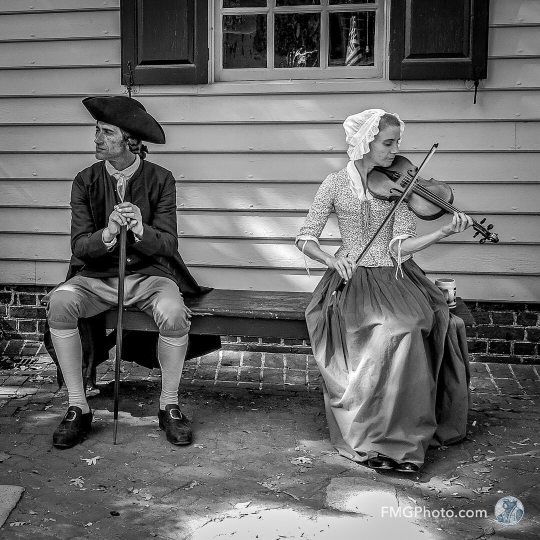
Daily Waypoint | N 37° 16′ 16.50″ W 76° 42′ 0.00″ Colonial Williamsburg Town Folk—Colonial Williamsburg is a living-history museum and private foundation presenting part of an historic district in the city of Williamsburg, Virginia. Colonial Williamsburg's 301-acre Historic Area includes buildings from the 18th century (during part of which the city was the capital of Colonial Virginia), as well as 17th-century, 19th-century, and Colonial Revival structures, as well as more recent reconstructions. The Historic Area is an interpretation of a colonial American city, with exhibits of dozens of restored or re-created buildings related to its colonial and American Revolutionary War history. One of the largest history projects in the nation and a tourist attraction, it is part of the Historic Triangle of Virginia, which includes Jamestown and Yorktown, linked by the Colonial Parkway. It was designated a National Historic Landmark District in 1960. Costumed employees work and dress as people did in the era, sometimes using colonial grammar and diction. Prominent buildings include the Raleigh Tavern, the Capitol, the Governor's Palace, as well as the Courthouse, the George Wythe House, the Peyton Randolph House, the Magazine, and independently owned and functioning Bruton Parish Church. Colonial Williamsburg's portion of the Historic Area begins east of the College of William & Mary's College Yard. https://www.fmgphoto.com/Feature-Special-Galleries/n-W7xDfN/Colonial-Williamsburg/i-rHhpBmK/A https://followingmygps.com/colonial-williamsburg/ #ColonialWilliamsburg #WilliamsburgVirginia #livinghistorymuseum #museum #Colonial #ColonialVirginia #HistoricTriangle #Colonialcapital #HistoricLandmark #GovernorsPalace #coloniallife #historicalreenactment #discoveramerica #travelpics #travellife #travelinspiration #travelblog #travelphotography #fmgphoto #followingmygps #travelphotography #traveller #photography #travelamerica #lifestyle #LifeWellLived #travelmagazine #roadtripping #exploring #roadtrip (at Colonial Williamsburg) https://www.instagram.com/p/CCLsvmasGqE/?igshid=1w0hl8mwzsf08
#colonialwilliamsburg#williamsburgvirginia#livinghistorymuseum#museum#colonial#colonialvirginia#historictriangle#colonialcapital#historiclandmark#governorspalace#coloniallife#historicalreenactment#discoveramerica#travelpics#travellife#travelinspiration#travelblog#travelphotography#fmgphoto#followingmygps#traveller#photography#travelamerica#lifestyle#lifewelllived#travelmagazine#roadtripping#exploring#roadtrip
1 note
·
View note
Link
This Day in Confederate History: 3rd War Secretary in 2 Years
#This Day in Confederate History#Civil War#George Wythe Randolph#Jefferson Davis#Thomas Jefferson#Abraham Lincoln#Confederacy
0 notes
Quote
The boys were Thomas Jefferson, James Madison, Benjamin Franklin, Merriweather Lewis, and George Wythe. The daughters were Anne, Ellen, Virginia, Cornelia, and a little thing that could just run about when I came away. Her name was [Septimia] . . . Only two of them were married when I came away. Jeff married Jane Nicholas . . . and Anne married Charles S. Bankhead. Anne, Ellen, and Merriweather Lewis had the fresh rosy countenance of the Jefferson family. The rest of the family . . . had the Randolph complexion, which was dark and Indian-like . . . Virginia and Cornelia were tall, active, and fine looking, with very dark complexions. Mr. Jefferson was perfectly devoted to his grandchildren, and they to him. They delighted to follow him about over the grounds and garden, and he took great pleasure in talking with them, and giving them advice, and directing their sports. I have heard him tell them enough of times that nobody should live without some useful employment . . . Merriweather Lewis was a very bright little fellow. I always thought him the most sprightly of all the Randolph children.
The Private Life of Thomas Jefferson, Hamilton W. Pierson
37 notes
·
View notes